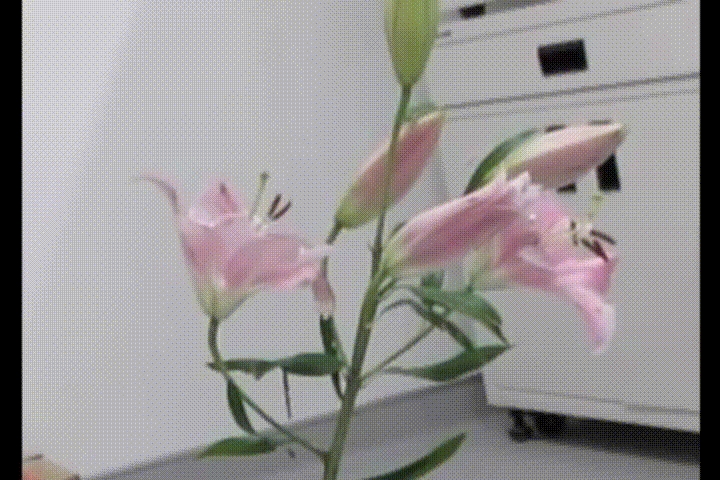This Drone Dive-bombs Plants to Pollinate Them
Posted on Categories Discover Magazine

The hum of insects pollinating plants could one day be joined by a decidedly different buzz.
Researchers from the Nanomaterials Research Institute in Japan have developed a system for transferring pollen between plants using a tiny commercial drone armed with an adhesive gel. They say that their sticky drone solution could one day help ailing pollinator populations ensure crops keep having sex.
Helping Plants Get It On
For their artificial Cupid they used an off-the-shelf Aerius drone, billed as “the world’s smallest quadcopter” by its manufacturer, and attached stiff bristles made of horsehair to the underside. They coated the hairs with a special ionic liquid gel that mimics some important properties of insect’s wings, and because it’s not water-based, it won’t dry out.
With some practice, researchers swooped the drone past a Japanese woodland lily, gathering pollen from its stamen, before taking the precious payload to another lily and brushing against it to deliver the goods. They confirmed that pollen was delivered using fluorescent microscopy, and say that the drone and its hairy belly didn’t damage the plants at all. The researchers published their work in the journal Chem.
The technique currently has a success rate of about 50 percent, they say, and that might go down if it’s attempted on smaller flowers, or plants with more difficult to reach reproductive organs. Any commercial applications would require hundreds or thousands of these drones as well, most likely controlled by a computer. We haven’t arrived at the point where programs can control drones with that much accuracy, although as this year’s Super Bowl halftime show revealed, scientists are making progress. Drone technology may have to progress as well — the Aerius can only stay aloft for up to seven minute before needing to recharge.
Other Options Too
If drones don’t work, we could perhaps rely on other insects to get the job done. The researchers also tested their gel on ants by coating them with the substance and letting them crawl around inside of the flowers. The ants succeeded in picking up pollen, and didn’t seem to suffer any ill effects from the gel. Getting ants to actually crawl from flower to flower, however, could be another problem.
As bee populations teeter on the edge, we may need to consider alternative, or supplementary, options for pollination. It’s estimated that 75 percent of our crops and 90 percent of wild flowering plants depend on bees for their survival. If their numbers decline, we’ll need some way to pick up the slack.
Producing enough drones to replace bees probably isn’t feasible — there are thousands of bees in one hive alone — but robotic pollinators could have a place in research labs requiring special patterns of behavior that bees can’t replicate, or in hostile environments such as a biodome on Mars, biosciences demonstrator Elizabeth Franklin wrote in The Conversation.
If anything, it’s proof that drone technology is versatile enough to take on even natural processes.